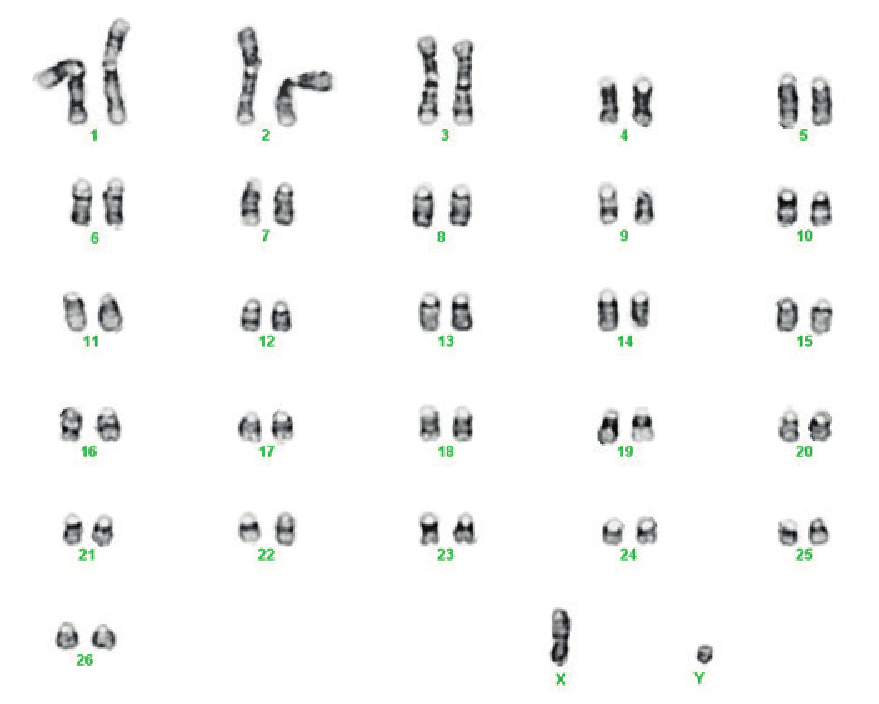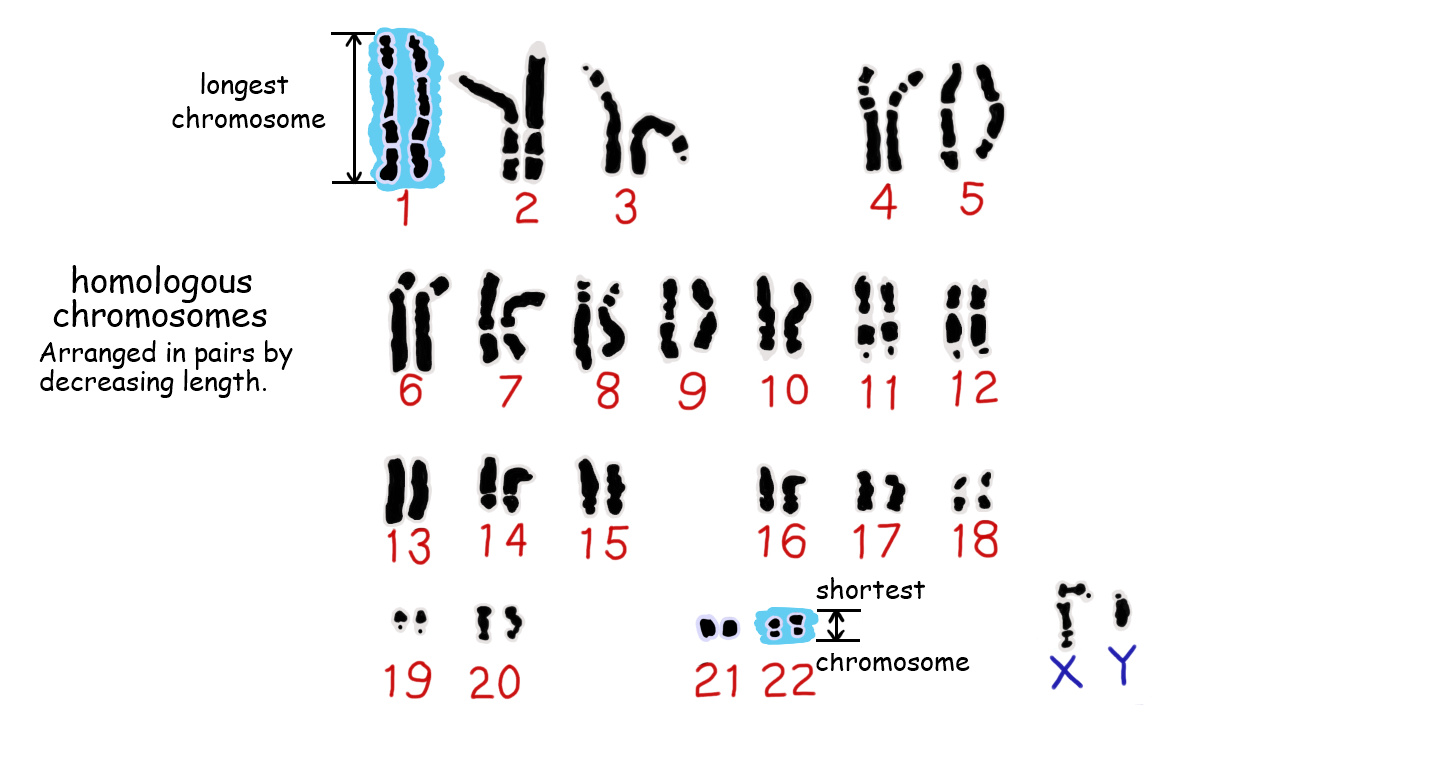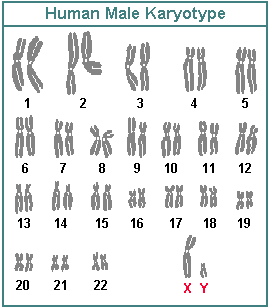IB Biology HL (HIGHER level)- 2024 – Practice Questions- All Topics
Topic 3.2 Chromosomes
Topic 3 Weightage : 5%
All Questions for Topic 3.2 – Prokaryotic Genetics, Eukaryote Genetics, Identifying Genes, Homologous Pairs, Diploid versus Haploid, Autosome versus Heterosome, Karyograms, Chromosome Size, Chromosome Number, Genome Size, Prokaryotic vs Eukaryotic DNA, Chromosome Types, Block Mutations, Sex Determination
The image shows a karyogram.

What information can be determined from this karyogram?
A. The sex is female.
B. The haploid number is 54.
C. Disjunction occurred during meiosis.
D. The species is not human.
▶️Answer/Explanation
Markscheme
D
A karyogram is a graphical depiction of a karyotype, which is the number, size, and shape of chromosomes of a particular organism. A karyogram can be used to visualize the characteristics of chromosomes, such as their banding patterns, centromere positions, and any abnormalities. A karyogram can be made by staining the chromosomes with a dye and arranging them in pairs according to their size and shape.
Any species that has chromosomes can show a karyogram. For example, humans have 23 pairs of chromosomes, including 22 pairs of autosomes and one pair of sex chromosomes. A human karyogram can reveal if a person has any chromosomal disorders, such as Down syndrome, which is caused by an extra copy of chromosome 21. However the given karyogram have 27 pairs of chromosomes, including 26 pairs of autosomes and one pair of sex chromosomes, so we can conclude that the given karyogram is not of human.
Which is a characteristic of the haploid number of eukaryotic chromosomes?
A. It doubles in mitosis.
B. It is fixed for each species.
C. It is an even number for all species.
D. It is positively correlated with an animal’s mass.
▶️Answer/Explanation
Markscheme
B
The haploid number of eukaryotic chromosomes is the number of chromosomes in a gamete (sex cell) of an organism. It is half of the diploid number, which is the number of chromosomes in a somatic (body) cell. The haploid number is fixed for each species because it is determined by the process of meiosis, which reduces the chromosome number by half. If the haploid number were not fixed, then the chromosome number would vary in each generation and cause problems for the proper alignment and segregation of chromosomes during meiosis.
What is characteristic of homologous chromosomes?
A. They have an identical DNA sequence.
B. They are of the same length in karyograms.
C. They form pairs in prokaryotes.
D. They carry the same alleles.
▶️Answer/Explanation
Markscheme
B

Homologous chromosomes are pairs of chromosomes that have the same length, centromere position, and gene loci. They are inherited from the mother and father of an organism. A karyogram is a picture of the chromosomes of an organism arranged in homologous pairs of decreasing length. Therefore, homologous chromosome pairs are of same length in karyograms because they have the same structure and genes.
What is a characteristic of the human Y chromosome?
A. It is made of DNA and histones covered by phospholipids.
B. It contains some genes that are not present on the X chromosome.
C. It is the largest chromosome in the human karyotype.
D. It has a condensed length of approximately 100 µm.
▶️Answer/Explanation
Markscheme
B
The human Y chromosome is one of the two sex chromosomes that determine the biological sex of an individual. It is present only in males, who have one X and one Y chromosome, while females have two X chromosomes. The Y chromosome contains about 55 genes, including the SRY gene, which triggers male development. The Y chromosome contains the genetic information which is not present in the X chromosome. The Y chromosome can also be used to trace the male lineage of a person, as it is only passed down from father to son.
What information can be concluded from the karyotype?

A. The person is a normal male.
B. The person is a normal female.
C. The person is a male with Down syndrome.
D. The person is a female with Down syndrome.
▶️Answer/Explanation
Markscheme
C

Any species that has chromosomes can show a karyogram. For example, humans have 23 pairs of chromosomes, including 22 pairs of autosomes and one pair of sex chromosomes. A human karyogram can reveal if a person has any chromosomal disorders, such as Down syndrome, which is caused by an extra copy of chromosome 21. but here in the digram there is no extra copy of chromosome is present in the chromosome 21 so, the correct answer is A.